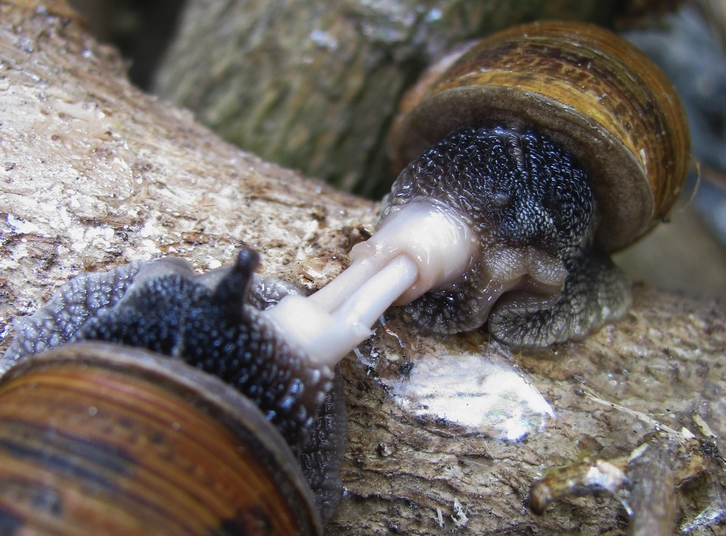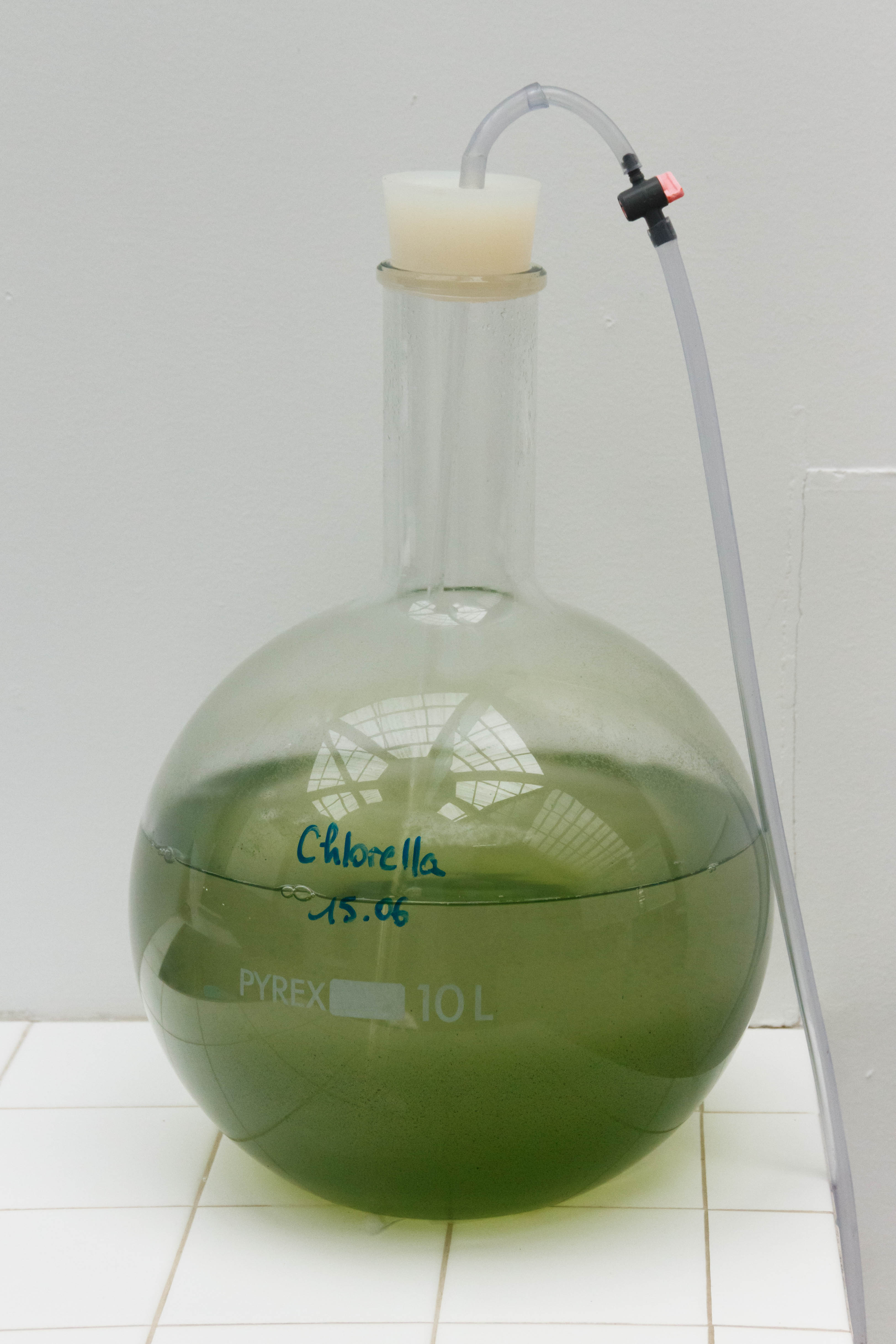|
Hydra Viridissima
''Hydra viridissima'' is a species of cnidarian which is commonly found in still or slow-moving freshwater in the Northern temperate zone. ''Hydra viridissima'' is commonly called green hydra due to its coloration, which is due to the symbiotic green algae ''Chlorella vulgaris'' which live within its body. These creatures are typically 10 mm long and have tentacles that are about half of their length. They are strictly carnivorous and typically feed on small crustaceans, insects and annelids. ''Hydra'' are normally sessile and live on aquatic vegetation. They secrete mucous to attach to substrate using their basal disc. Anatomy ''Hydra'' are multi-cellular organisms. They are made up of two layers of epithelial cells and have a hypostome or mouth opening. Circling the mouth are tentacles that contain nematocysts or stinging cells to help in prey capture. The mouth and tentacles are called the hydranth. The rest of the ''Hydra'' is known as the column and is divided into four ... [...More Info...] [...Related Items...] OR: [Wikipedia] [Google] [Baidu] |
Peter Simon Pallas
Peter Simon Pallas Fellow of the Royal Society, FRS FRSE (22 September 1741 – 8 September 1811) was a Prussian zoologist and botanist who worked in Russia between 1767 and 1810. Life and work Peter Simon Pallas was born in Berlin, the son of Professor of Surgery Simon Pallas. He studied with private tutors and took an interest in natural history, later attending the University of Halle and the University of Göttingen. In 1760, he moved to the University of Leiden and passed his doctor's degree at the age of 19. Pallas travelled throughout the Netherlands and to London, improving his medical and surgical knowledge. He then settled at The Hague, and his new system of animal classification was praised by Georges Cuvier. Pallas wrote ''Miscellanea Zoologica'' (1766), which included descriptions of several vertebrates new to science which he had discovered in the Dutch museum collections. A planned voyage to southern Africa and the East Indies fell through when his father reca ... [...More Info...] [...Related Items...] OR: [Wikipedia] [Google] [Baidu] |
Nervous System
In Biology, biology, the nervous system is the Complex system, highly complex part of an animal that coordinates its Behavior, actions and Sense, sensory information by transmitting action potential, signals to and from different parts of its body. The nervous system detects environmental changes that impact the body, then works in tandem with the endocrine system to respond to such events. Nervous tissue first arose in Ediacara biota, wormlike organisms about 550 to 600 million years ago. In vertebrates it consists of two main parts, the central nervous system (CNS) and the peripheral nervous system (PNS). The CNS consists of the brain and spinal cord. The PNS consists mainly of nerves, which are enclosed bundles of the long fibers or axons, that connect the CNS to every other part of the body. Nerves that transmit signals from the brain are called motor nerves or ''Efferent nerve fiber, efferent'' nerves, while those nerves that transmit information from the body to the CNS a ... [...More Info...] [...Related Items...] OR: [Wikipedia] [Google] [Baidu] |
Gonochoric
In biology, gonochorism is a sexual system where there are only two sexes and each individual organism is either male or female. The term gonochorism is usually applied in animal species, the vast majority of which are gonochoric. Gonochorism contrasts with simultaneous hermaphroditism but it may be hard to tell if a species is gonochoric or sequentially hermaphroditic. (e.g. Parrotfish, '' Patella ferruginea''). However, in gonochoric species individuals remain either male or female throughout their lives. Species that reproduce by thelytokous parthenogenesis and do not have males can still be classified as gonochoric. Terminology The term is derived from Greek (''gone'', generation) + (''chorizein,'' to separate). The term gonochorism originally came from German gonochorismus. Gonochorism is also referred to as unisexualism or gonochory. Evolution Gonochorism has evolved independently multiple times and is very evolutionary stable in animals. Its stability and advan ... [...More Info...] [...Related Items...] OR: [Wikipedia] [Google] [Baidu] |
Hermaphroditic
In reproductive biology, a hermaphrodite () is an organism that has both kinds of reproductive organs and can produce both gametes associated with male and female sexes. Many taxonomic groups of animals (mostly invertebrates) do not have separate sexes. In these groups, hermaphroditism is a normal condition, enabling a form of sexual reproduction in which either partner can act as the female or male. For example, the great majority of tunicates, pulmonate molluscs, opisthobranch, earthworms, and slugs are hermaphrodites. Hermaphroditism is also found in some fish species and to a lesser degree in other vertebrates. Most plants are also hermaphrodites. Animal species having different sexes, male and female, are called gonochoric, which is the opposite of hermaphrodite. There are also species where hermaphrodites exist alongside males (called androdioecy) or alongside females (called gynodioecy), or all three exist in the same species (called trioecy); these three systems ... [...More Info...] [...Related Items...] OR: [Wikipedia] [Google] [Baidu] |
Asexual Reproduction
Asexual reproduction is a type of reproduction that does not involve the fusion of gametes or change in the number of chromosomes. The offspring that arise by asexual reproduction from either unicellular or multicellular organisms inherit the full set of genes of their single parent and thus the newly created individual is genetically and physically similar to the parent or an exact clone of the parent. Asexual reproduction is the primary form of reproduction for single-celled organisms such as archaea and bacteria. Many eukaryotic organisms including plants, animals, and fungi can also reproduce asexually. In vertebrates, the most common form of asexual reproduction is parthenogenesis, which is typically used as an alternative to sexual reproduction in times when reproductive opportunities are limited. Komodo dragons and some monitor lizards can also reproduce asexually. While all prokaryotes reproduce without the formation and fusion of gametes, mechanisms for lateral g ... [...More Info...] [...Related Items...] OR: [Wikipedia] [Google] [Baidu] |
Hydra Viridissima In Freshwater Aquarium (also Visible Are A Rhabdocoelan And Albino Planorbid Ramshorn Snail) 02
Hydra generally refers to: * Lernaean Hydra, a many-headed serpent in Greek mythology * ''Hydra'' (genus), a genus of simple freshwater animals belonging to the phylum Cnidaria Hydra or The Hydra may also refer to: Astronomy * Hydra (constellation) * Hydra (moon), a satellite of Pluto Computing * Hydra (chess), a chess computer * Hydra (digital repository) * Hydra (operating system) * Hydra (software) * Hydra 100, a multi-GPU hardware solution * HYDRA Game Development Kit, a development system by André LaMothe * Razer Hydra, a game controller * NEC HYDRAstor, a storage system Fictional entities * Hydra (comics), a fictional organization in the Marvel Universe ** Hydra (Marvel Cinematic Universe), an organisation in the Marvel Cinematic Universe based on the comics counterpart * Hydra (''Dungeons & Dragons''), a fictional monster in ''D&D'' * Hydra (''Transformers''), a character in ''Transformers'' * The Hydra, a fictional organization in ''The Phantom'' * Hydra, a ... [...More Info...] [...Related Items...] OR: [Wikipedia] [Google] [Baidu] |
Chlorella
''Chlorella'' is a genus of about thirteen species of single- celled green algae belonging to the division Chlorophyta. The cells are spherical in shape, about 2 to 10 μm in diameter, and are without flagella. Their chloroplasts contain the green photosynthetic pigments chlorophyll-a and -b. In ideal conditions cells of ''Chlorella'' multiply rapidly, requiring only carbon dioxide, water, sunlight, and a small amount of minerals to reproduce. The name ''Chlorella'' is taken from the Greek χλώρος, ''chlōros/ khlōros'', meaning green, and the Latin diminutive suffix ''ella'', meaning small. German biochemist and cell physiologist Otto Heinrich Warburg, awarded with the Nobel Prize in Physiology or Medicine in 1931 for his research on cell respiration, also studied photosynthesis in ''Chlorella''. In 1961, Melvin Calvin of the University of California received the Nobel Prize in Chemistry for his research on the pathways of carbon dioxide assimilation in plant ... [...More Info...] [...Related Items...] OR: [Wikipedia] [Google] [Baidu] |
Symbiotic Relationship
Symbiosis (from Greek , , "living together", from , , "together", and , bíōsis, "living") is any type of a close and long-term biological interaction between two different biological organisms, be it mutualistic, commensalistic, or parasitic. The organisms, each termed a symbiont, must be of different species. In 1879, Heinrich Anton de Bary defined it as "the living together of unlike organisms". The term was subject to a century-long debate about whether it should specifically denote mutualism, as in lichens. Biologists have now abandoned that restriction. Symbiosis can be obligatory, which means that one or more of the symbionts depend on each other for survival, or facultative (optional), when they can generally live independently. Symbiosis is also classified by physical attachment. When symbionts form a single body it is called conjunctive symbiosis, while all other arrangements are called disjunctive symbiosis."symbiosis." Dorland's Illustrated Medical Dictionary ... [...More Info...] [...Related Items...] OR: [Wikipedia] [Google] [Baidu] |
Flagella
A flagellum (; ) is a hairlike appendage that protrudes from certain plant and animal sperm cells, and from a wide range of microorganisms to provide motility. Many protists with flagella are termed as flagellates. A microorganism may have from one to many flagella. A gram-negative bacterium ''Helicobacter pylori'' for example uses its multiple flagella to propel itself through the mucus lining to reach the stomach epithelium, where it may cause a gastric ulcer to develop. In some bacteria the flagellum can also function as a sensory organelle, being sensitive to wetness outside the cell. Across the three domains of Bacteria, Archaea, and Eukaryota the flagellum has a different structure, protein composition, and mechanism of propulsion but shares the same function of providing motility. The Latin word means "whip" to describe its lash-like swimming motion. The flagellum in archaea is called the archaellum to note its difference from the bacterial flagellum. Eukary ... [...More Info...] [...Related Items...] OR: [Wikipedia] [Google] [Baidu] |
Sessility (motility)
Sessility is the biological property of an organism describing its lack of a means of self-locomotion. Sessile organisms for which natural ''motility'' is absent are normally immobile. This is distinct from the botanical concept of sessility, which refers to an organism or biological structure attached directly by its base without a stalk. Sessile organisms can move via external forces (such as water currents), but are usually permanently attached to something. Organisms such as corals lay down their own substrate from which they grow. Other sessile organisms grow from a solid such as a rock, dead tree trunk, or a man-made object such as a buoy or ship's hull. Mobility Sessile animals typically have a motile phase in their development. Sponges have a motile larval stage and become sessile at maturity. Conversely, many jellyfish develop as sessile polyps early in their life cycle. In the case of the cochineal, it is in the nymph stage (also called the crawler stage) that the co ... [...More Info...] [...Related Items...] OR: [Wikipedia] [Google] [Baidu] |
Endoderm
Endoderm is the innermost of the three primary germ layers in the very early embryo. The other two layers are the ectoderm (outside layer) and mesoderm (middle layer). Cells migrating inward along the archenteron form the inner layer of the gastrula, which develops into the endoderm. The endoderm consists at first of flattened cells, which subsequently become columnar. It forms the epithelial lining of multiple systems. In plant biology, endoderm corresponds to the innermost part of the cortex (bark) in young shoots and young roots often consisting of a single cell layer. As the plant becomes older, more endoderm will lignify. Production The following chart shows the tissues produced by the endoderm. The embryonic endoderm develops into the interior linings of two tubes in the body, the digestive and respiratory tube. Liver and pancreas cells are believed to derive from a common precursor. In humans, the endoderm can differentiate into distinguishable organs afte ... [...More Info...] [...Related Items...] OR: [Wikipedia] [Google] [Baidu] |





